|
|
|
Sort Order |
|
|
|
Items / Page
|
|
|
|
|
|
|
| Srl | Item |
| 1 |
ID:
132307
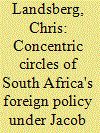

|
|
|
|
|
| Publication |
2014.
|
| Summary/Abstract |
South Africa's foreign policy could be viewed as a set of concentric circles which define the Republic's international priorities. In an attempt to bring coherence and predictability to them, the Zuma government has tried to learn from its predecessor, the Mbeki government (1999-2008), by putting emphasis on key international relations and concerns, and the idea was suggested that these different layers reinforced each other.
According to stated policy, pursuit of the national interests lay at the heart of the Republic's international strategies and came to be regarded as the new glue that holds it together, albeit it is four years into Zuma's government and the 'national interest' remains poorly developed and in need of expansion and implementation. A set of wider foreign policy concentric circles informs foreign policy, championed as 'Pursuing African Advancement and Enhanced Cooperation'. This agenda was to be pursued under a series of sub-goals or sub-categories, for our purposes concentric circles, namely (a) closing the gap between domestic and foreign policy; (b) continued prioritisation of the African continent-the Mbeki government called it African Agenda, or Africa first policy; (c) strengthening South-South relations; (d) strategic relations with strategic formations for the North; (e) participating in the global system of governance and (f) strengthening political and economic relations. While these six pillars were clearly developed on paper, and self-standing, how they all relate to the epicentre of the national interest and overlap one another is not so clear. More serious effort is needed on the part of government to close this lacuna, and the idea of coherence between them should not be assumed if there is to be consistency between them and the stated annulus of national interest.
|
|
|
|
|
|
|
|
|
|
|
|
|
|
|
|
| 2 |
ID:
102992
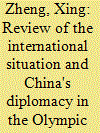

|
|
|
| 3 |
ID:
124528
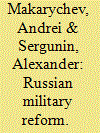

|
|
|
|
|
| Publication |
2013.
|
| Summary/Abstract |
This critical comment examines the incentives, major priorities, difficulties and first results of the Russian military reform that is being implemented since 2008. The authors conclude that despite numerous drawbacks and barriers to the reformist efforts certain successes can be identified. Particularly, there is a clear shift from the old-fashioned, Soviet-type army to a more compact, mobile, better equipped and combat-ready armed forces that are capable to cope with today's challenges to Russian national security.
|
|
|
|
|
|
|
|
|
|
|
|
|
|
|
|
| 4 |
ID:
128950
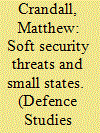

|
|
|
|
|
| Publication |
2014.
|
| Summary/Abstract |
This article will attempt to establish what is the relationship between domestic and international strategies taken by small states. To do this, Estonia will be used as a case study to examine how it has reacted to cyber-security, energy security, and national identity security. This work will take a qualitative critical approach that transcends common ontologies and epistemologies in International Relations. This will enable us to look at the relationship between levels of analysis, not just compartmentalize and compare them. A wide use of academic sources, open Estonian documents (both governmental and non-governmental), as well a semi-structured interview with an official of the Ministry of Defense will be used. This article concludes that small States will need to use all their resources, on both the domestic and international levels, to be successful in facing soft security.
|
|
|
|
|
|
|
|
|
|
|
|
|
|
|
|
| 5 |
ID:
128875
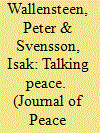

|
|
|
|
|
| Publication |
2014.
|
| Summary/Abstract |
Mediation, as a means to end armed conflicts, has gained prominence particularly in the past 25 years. This article reviews peace mediation research to date, with a particular focus on quantitative studies as well as on significant theoretical and conceptual works. The growing literature on international mediation has made considerable progress towards understanding the conditions under which mediation processes help bring armed conflicts to peaceful ends. Still, the field of international mediation faces a number of problems. In this article, we aim to identify findings on mediation frequency, strategies, bias, and coordination as well as on trends in defining success. Although previous research has generated important insights, there are still unresolved issues and discrepancies which future mediation research needs to explore. Many of the challenges that the field faces could be managed by giving greater attention to accumulative knowledge production, more disaggregated analysis, and a closer dialogue between policy and research.
|
|
|
|
|
|
|
|
|
|
|
|
|
|
|
|
|
|
|
|
|